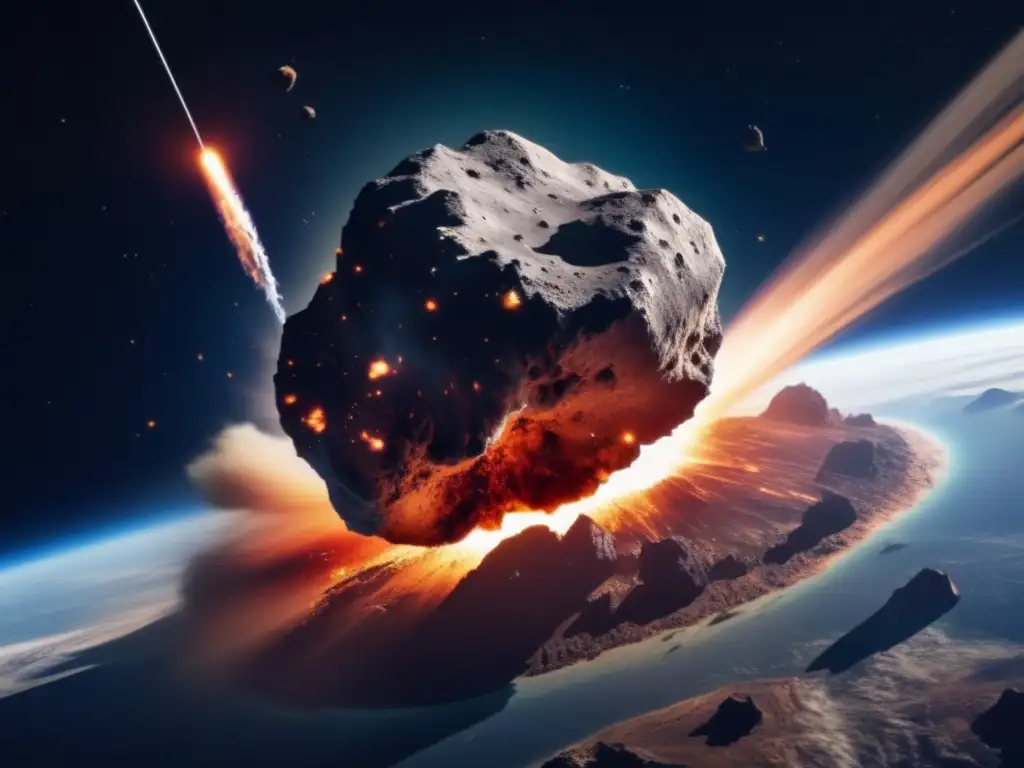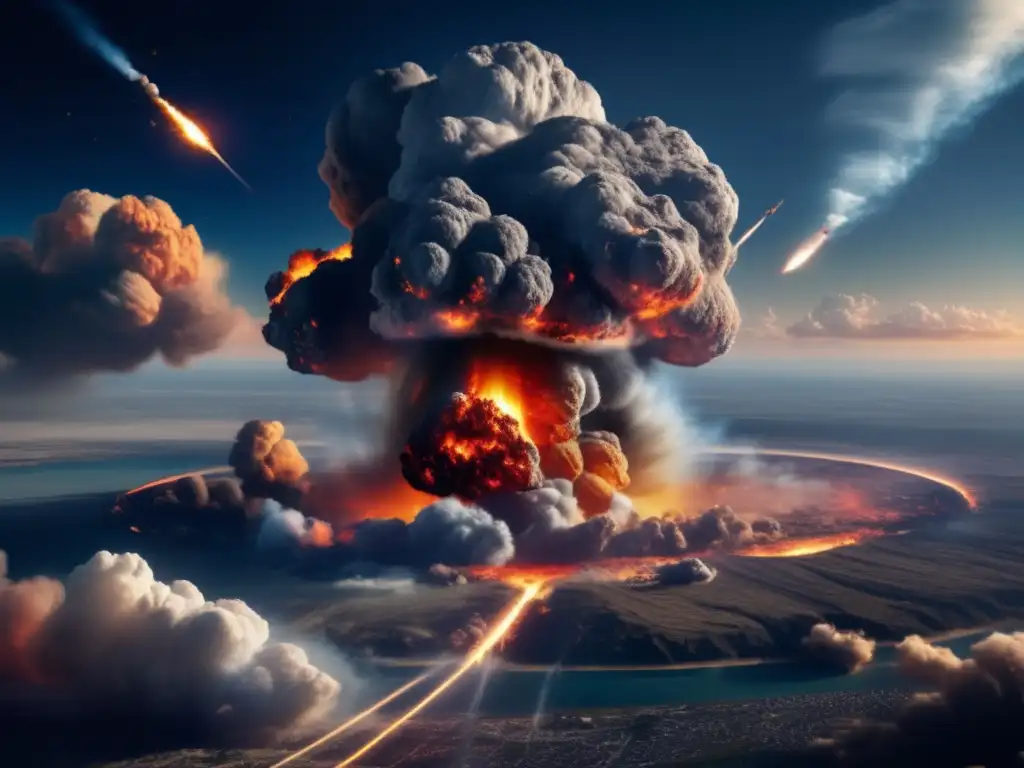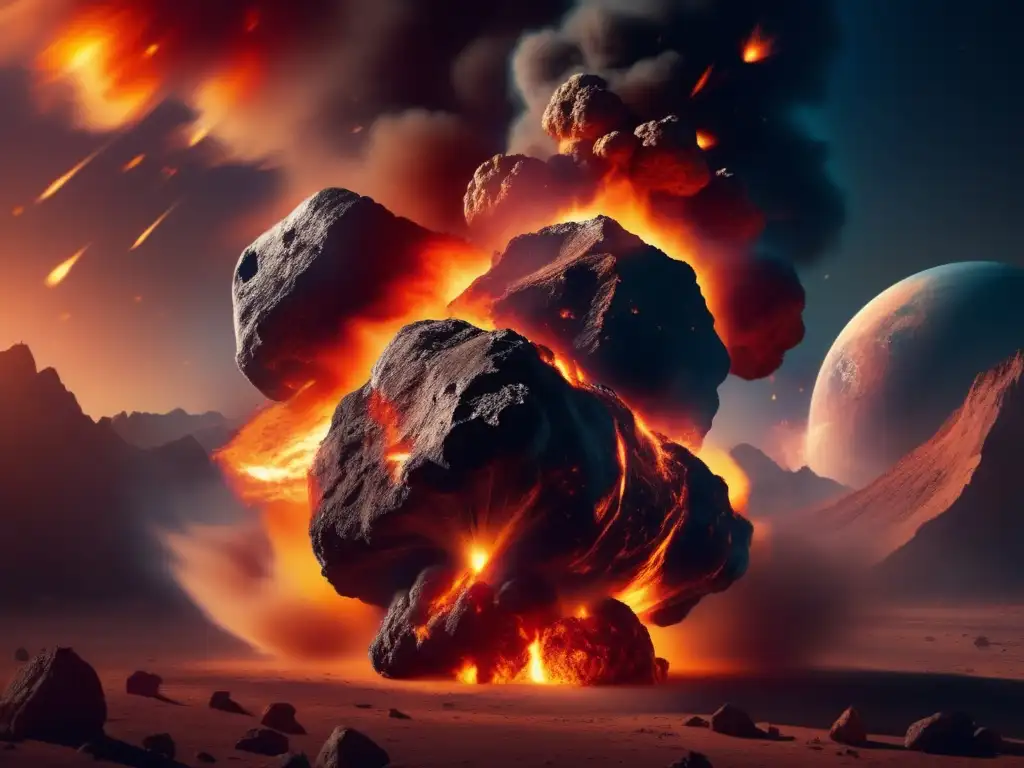When An Asteroid Strikes: The First 24 Hours

Introduction
An asteroid impact is an event that can have a significant impact on our planet, and it is essential to understand what happens in the first 24 hours after such an event. In this article, we will explore the immediate aftermath of an asteroid impact and its effects on the environment, life, and human society.
Assessing the Impact

Detection and Response
The first step in mitigating the effects of an incoming asteroid is detection. With current technology, astronomers can detect most asteroids nearing Earth's orbit and determine their size, speed, and trajectory. If an asteroid is likely to hit Earth, various response methods can be employed, such as deflecting it off course or mitigating its effects by evacuating the impacted areas.
The Blast and Shockwave
The impact zone experiences a high-pressure blast wave, followed by a less intense but longer-lasting shockwave. The blast wave is a result of the sudden release of energy from the collision, which can reach speeds of up to 0.5 miles per second. The shockwave moves slower than the blast wave but can still cause significant damage in its path.
The Crater
The impact crater that forms after an asteroid strike is typically much larger than the actual asteroid itself. The size and shape of the crater depend on the size and speed of the asteroid, as well as the composition and structure of the ground it hits. The heat generated during the impact can melt surrounding rocks and create glassy debris around the crater.
Environmental Consequences

Firestorms and Heat Waves
The impact generates a tremendous amount of heat, which can cause widespread fires. The fires release soot and other particles into the atmosphere, leading to the darkening of the sky and a global cooling effect. The heat also causes a blast of hot air to rush out from the impact site, capable of starting new fires and burning everything in its path.
Tsunamis and Flooding
If the asteroid impact occurs in or near an ocean, it can generate a megatsunami, a massive wave that can reach heights of hundreds of feet. The wave can travel across entire oceans, causing widespread flooding and destruction in coastal regions.
Chemical Reactions and Dust Clouds
The impact of an asteroid releases various chemicals, including water vapor, sulfur dioxide, and carbon dioxide, which can react with the atmosphere and create acid rain. The impact can also send up dust and debris into the atmosphere, blocking sunlight and reducing photosynthesis, leading to a significant impact on crop yields and global food supplies.
Human Impact

Death and Injuries
An asteroid impact can cause extensive loss of life and injuries in the impacted area. The blast wave and shockwave can cause severe trauma, while the fires and flooding can displace people and leave them without homes or access to clean water and food.
Economic Disruption
The economic consequences of an asteroid impact can be far-reaching and long-lasting. Business and infrastructure can be destroyed, leading to a decline in the economy. With the disruption in transportation and communication networks, vital resources like food and medical supplies may not get delivered on time, leading to further complications.
Long-Term Effects
The impact of an asteroid can have long-term effects on human civilization. The loss of infrastructure and resources can lead to societal collapse, particularly in areas already struggling with political instability or economic uncertainty. Climate change caused by the impact can also lead to lasting environmental damage and further social and economic consequences.
Frequently Asked Questions

-
What should I do if an asteroid is headed towards Earth?
If you receive a warning of an incoming asteroid, follow the instructions provided by emergency authorities. If advised to evacuate, do so immediately. If there is no time to evacuate, seek shelter in a reinforced structure or underground.
-
Can we prevent an asteroid from hitting Earth?
Several methods can be employed to deflect or redirect an asteroid, such as using gravity tractors, kinetic impactors, or nuclear explosions. However, these methods require careful planning, collaboration, and resources to be successful.
-
Can we predict where an asteroid will land?
Scientists can estimate the likely impact zone of an incoming asteroid based on its trajectory and speed. However, predicting the exact location is challenging due to the unpredictable nature of the asteroid's break-up and the influence of Earth's atmosphere on its path.
-
What are the chances of an asteroid hitting Earth?
The probability of an asteroid impact in any given year is estimated to be one in 500,000. However, the effects of even a small asteroid impact can be significant, highlighting the importance of continued monitoring and mitigation efforts.
-
What can I do to help protect myself and my community from an asteroid impact?
You can support efforts to improve asteroid detection and response methods, stay informed about potential asteroid threats, and engage in emergency preparedness planning with your community.
Conclusion
An asteroid impact is a catastrophic event that can cause widespread damage and loss of life. Understanding the potential environmental, social, and economic impact of an asteroid impact is crucial in developing effective response strategies. By investing in asteroid monitoring and mitigation efforts, we can reduce the chances of an asteroid impact and minimize its negative consequences on our planet and our civilization.
We encourage you to continue learning about asteroids and engaging with www.asteroidrealm.com to stay up-to-date with the latest developments in this exciting field.
Additional Resources

For more information on asteroid impacts and related topics, visit these resources:
 Ejecta And Impactites: The Debris Of Asteroid Collisions
Ejecta And Impactites: The Debris Of Asteroid Collisions Asteroid Impact Hypothesis: Science Or Speculation?
Asteroid Impact Hypothesis: Science Or Speculation? Asteroids And Climate Change: A Complex Connection
Asteroids And Climate Change: A Complex ConnectionIf you want to discover more articles similar to When An Asteroid Strikes: The First 24 Hours, you can visit the Asteroid Impacts category.
Leave a Reply

Articulos relacionados: